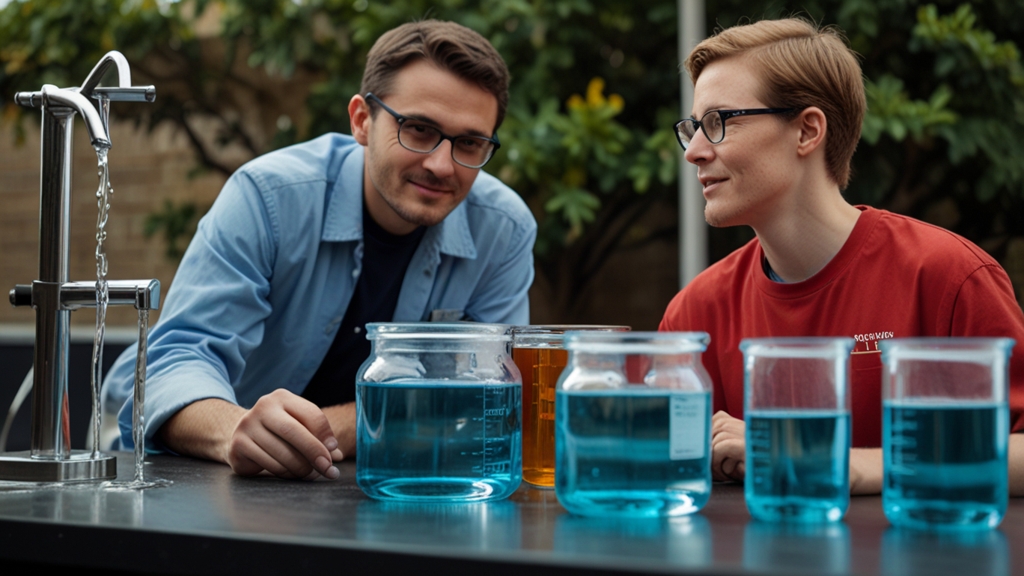Harnessing Chemistry: The Future of Clean Water Solutions
Water is quintessential for life, yet one of the most pressing issues facing our planet is the scarcity of clean and safe drinking water. Advances in chemistry offer promising solutions to this global challenge. By leveraging innovative chemical processes, we can develop effective, sustainable, and economically viable methods to ensure abundant clean water supplies. This article explores the potential of chemistry in revolutionizing water purification and treatment.
The Current Water Crisis
The United Nations reports that over 2 billion people lack access to safely managed drinking water services. This crisis is exacerbated by pollution, climate change, and inefficient water management practices. Traditional water treatment methods, while effective, often require substantial energy inputs and chemical usage, leading to environmental concerns. Fortunately, chemistry provides numerous avenues to enhance these processes.
Innovative Chemical Solutions
Recent advancements in chemistry have led to the development of several groundbreaking water purification technologies. Among them are advanced oxidation processes (AOPs), which utilize powerful chemical reactions to degrade pollutants.
"Advanced oxidation processes involve the generation of highly reactive species, such as hydroxyl radicals, which can break down even the most stubborn contaminants. These methods are highly efficient and offer the potential for complete mineralization of organic pollutants."
Nanotechnology: The Game Changer
Nanotechnology is another field within chemistry that holds immense promise for water purification. Nanomaterials, due to their unique properties, can serve as excellent catalysts and adsorbents for removing contaminants. For instance, silver nanoparticles exhibit strong antibacterial properties, making them ideal for disinfection purposes.
Additionally, carbon-based nanomaterials like graphene oxide have shown exceptional capabilities in adsorbing heavy metals and organic pollutants. Their large surface area and tunable surface chemistry allow for highly efficient removal of toxic substances, paving the way for more effective treatment processes.
Membrane Technology
Membrane filtration is a well-established method in water treatment, but recent chemical innovations have significantly enhanced its efficiency. The development of advanced polymer membranes with tailored porosity and surface functionality has led to improved selectivity and fouling resistance.
"High-performance polymer membranes can selectively separate contaminants based on size and charge, allowing for the removal of a wide range of pollutants while minimizing energy consumption."
Electrochemical Methods
Electrochemical water treatment methods are gaining attention due to their versatility and effectiveness. These processes involve applying an electric current to induce chemical reactions that remove contaminants. Techniques such as capacitive deionization (CDI) and electrocoagulation offer promising solutions for desalination and pollutant removal.
For instance, CDI utilizes electrodes to adsorb ions from water, providing an energy-efficient alternative to traditional desalination methods like reverse osmosis. Similarly, electrocoagulation employs electric fields to destabilize and remove suspended particles, oils, and heavy metals.
The Path Forward
While the aforementioned chemical innovations offer exciting prospects, their widespread adoption and implementation require concerted efforts from governments, industries, and academic institutions. Investment in research and development, along with supportive policies and regulations, is crucial for translating laboratory-scale successes into real-world solutions.
Moreover, public awareness and education about the significance of clean water and the role of chemistry in addressing this challenge are essential. Collaborative initiatives involving chemists, engineers, policymakers, and communities can drive the development and deployment of these technologies on a global scale.
Conclusion
Harnessing chemistry for clean water solutions is not just a scientific endeavor but a societal imperative. By embracing innovative chemical approaches, we can create sustainable and efficient water treatment methods that ensure access to safe and clean water for all. The future of water purification lies in the interdisciplinary collaboration and unwavering commitment to leveraging the full potential of chemistry. Together, we can overcome the challenges of water scarcity and pave the way for a healthier, more sustainable world.











